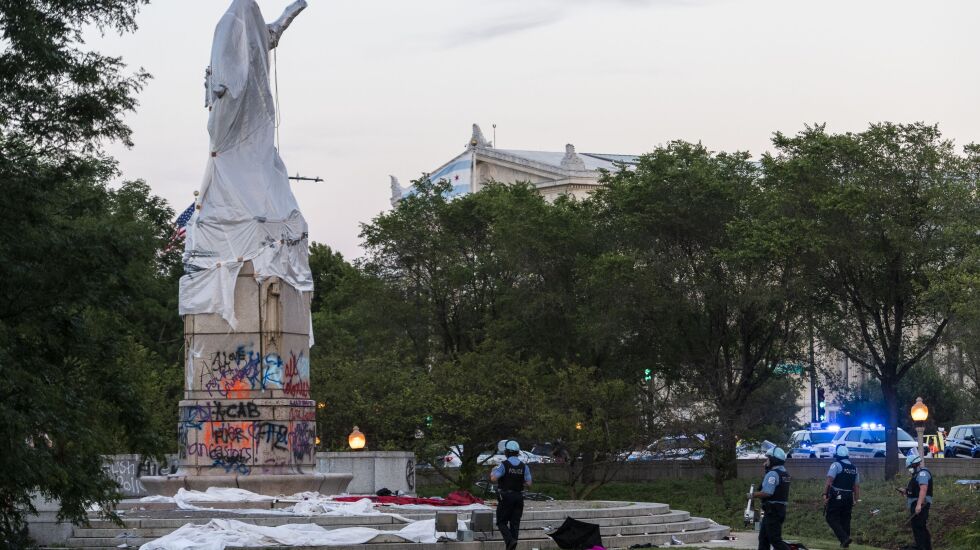
The Joint Civic Committee of Italian Americans said Wednesday it’s putting the final touches on a plan to return by Columbus Day — and protect at city expense — the statues of Christopher Columbus that Mayor Lori Lightfoot ordered removed from Grant and Arrigo parks two years ago.
President Ron Onesti said the plan — devised by a “national security firm” at the committee’s expense — calls for various levels of protection.
The statues became a favorite target of protests and vandalism during the civil unrest after the May 2020 murder of George Floyd. Protesters clashed with police in Grant Park while trying to topple the statue during a large confrontation in July 2020.
The security recommendations range from cameras, motion detectors and 24-hour guards to “plexiglass encasement” and “coatings” on the statues “so that clean-up is easier,” Onesti said.
To protect the Columbus statue in Grant Park, the report suggests barriers to keep the public farther away. There’s even a proposal to educate the public — by installing plaques to “tell the story of the Native American experience.”
“We really believe that one of the reasons this is all happening is because of misunderstandings and literal lies about the statues themselves,” Onesti said.
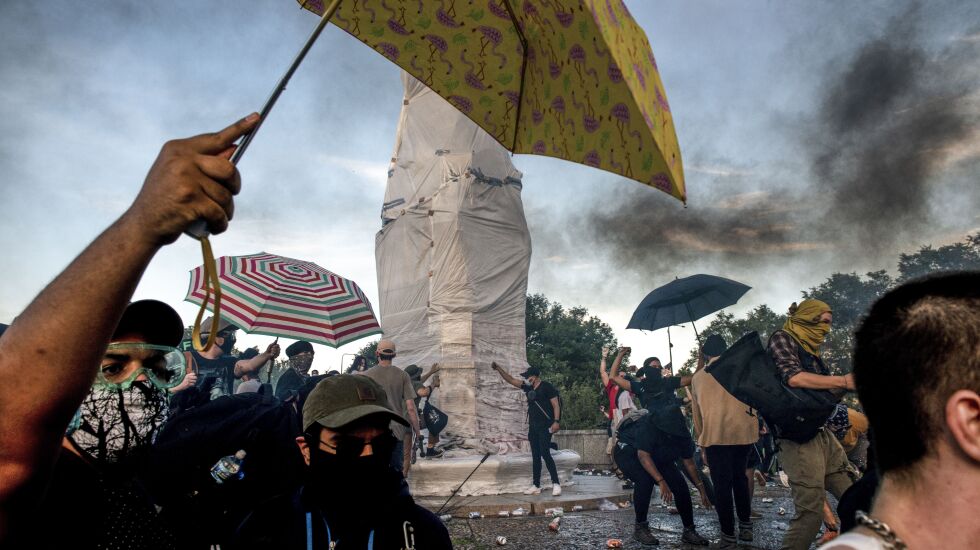
Onesti refused to put a price tag on the proposed security improvements, saying only that Chicago taxpayers “should come up with 100% of it.”
“It’s a protective measure of a city-owned or Park District-owned property, and it’s the job of the police department to protect its assets,” he said.
“If the mayor comes back and says she needs some involvement from the private sector, we would entertain looking at that.”
Ald. Nick Sposato (38th), who is Italian American, said the recommendation for around-the-clock police protection may not be realistic.
“We’re short as it is. That would be the worst thing to put three shifts of police officers out there protecting it. We don’t want to take guys off the street for that,” Sposato said.
The alternative is “for people to be civil,” but Sposato said he doesn’t believe “we’re ever gonna see that again in this country.”
“I just know what’ll happen if it goes back up: They’ll mobilize. The next day, they’ll be out there, and they’ll be attacking the police. They’ll try to tear it down. They’ll be throwing paint at it. It’ll be the same thing that happened a couple of years ago all over again,” he said.
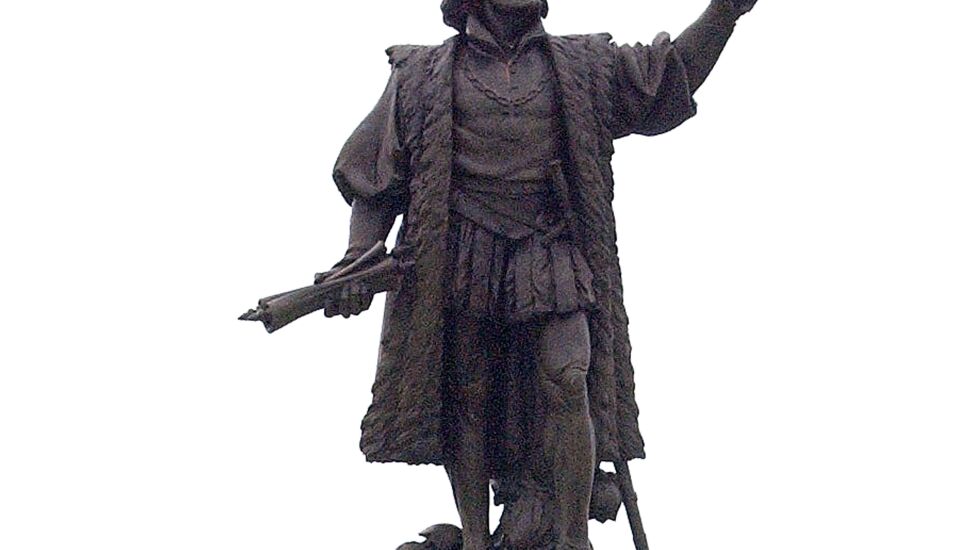
The security plan is designed to be a “conversation starter” — if only Lightfoot would begin that conversation, as she continues to ask a judge to dismiss the Joint Civic Committee’s lawsuit against the city.
If she doesn’t, Onesti is counting on a court order to force the mayor’s hand by Columbus Day. He noted he waited a year after the statues were “temporarily removed” to take court action.
“We want ’em up now with a plan, and we’d like to celebrate it by Columbus Day,” Oct. 10, he said.
Lightfoot in July 2020 had ordered the two statues “temporarily” removed in the middle of the night from their homes in Grant and Arrigo parks, based on information that something bad was about to happen.
At the same time, the mayor argued, the statues should not be torn down but rather used to confront the nation’s history and trigger a long-overdue “reckoning.”
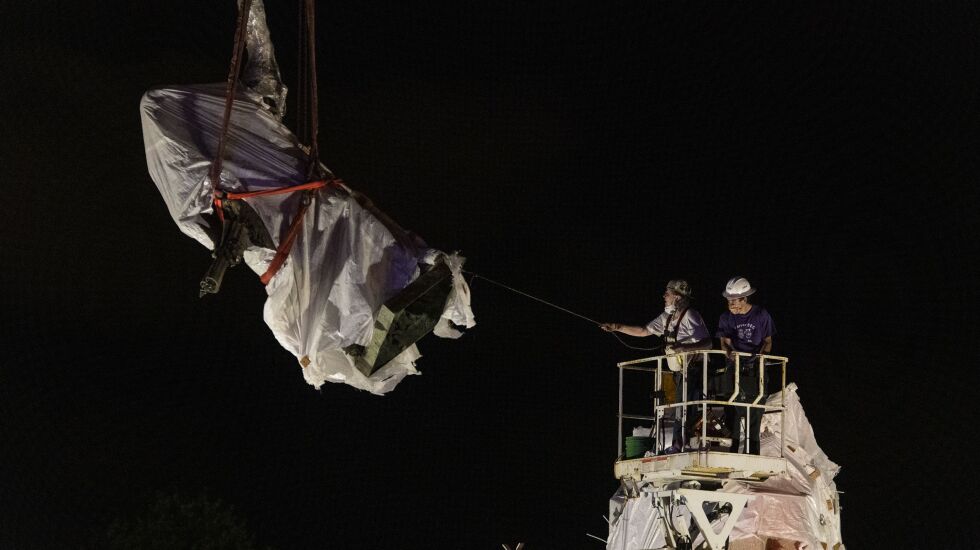
City Hall then created an advisory committee to conduct a comprehensive review of more than 500 Chicago statues and monuments to identify those that were offensive, problematic or not representative of the city’s values of equity and justice.
In early April, the monuments committee recommended those two Columbus statues be permanently sidelined.
But Lightfoot hinted strongly the purely advisory recommendation, nearly two years in the making, would be ignored — particularly when it comes to the two Columbus statues, as well as a Columbus monument near 92nd Street and South Chicago Avenue.
“I do not believe in erasing history. I think you’ve got to put it in a proper context. I think you’ve got to honor the entirety of that history,” the mayor said then.
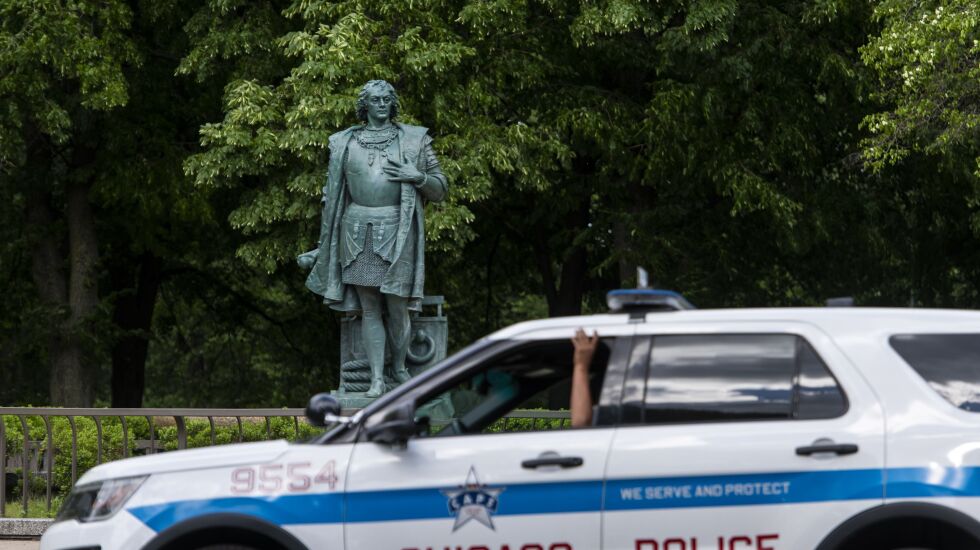
Lightfoot described Columbus as an “incredibly controversial figure, given what happened to the Native population across the Americas” after his arrival.
“He didn’t discover America, right? The Native populations were here for centuries before Columbus sailed here,” she said.
“But I also know that Columbus is an incredibly important figure to many — not the least of which is the Italian American community in Chicago.”
Sposato said Lightfoot assured him during their most recent dinner meeting that the Columbus statues would be returned. She didn’t say when.
“If it’s after the election, I’m fine — as long as it’s back up there,” Sposato said.
“It’ll be three years [by then], which is a long time — but as long as we get ’em back up there.”







